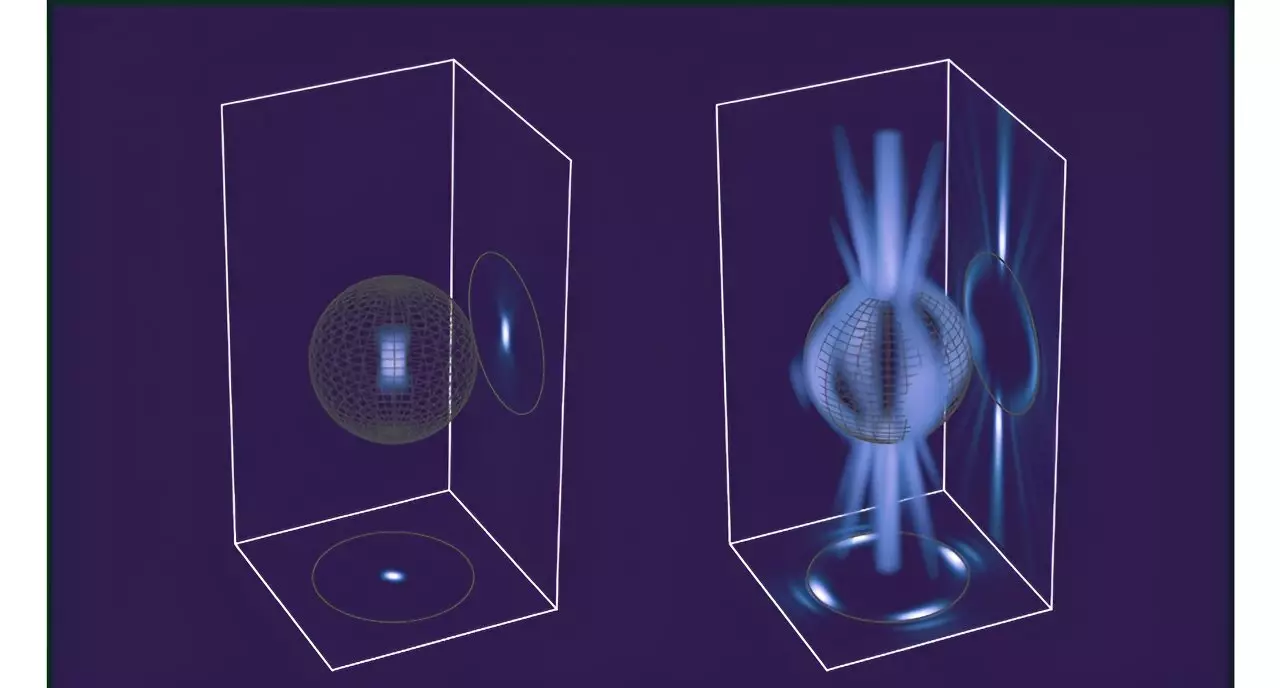For decades, optical tweezers have stood as a marvel of scientific ingenuity, allowing researchers to manipulate microscopic particles with astonishing precision. Developed in the 1980s, this technique relies on focused laser beams to hold tiny objects in place, much like a skilled pair of tweezers. But while fundamentally groundbreaking, these early methods faced intrinsic limitations—particularly when dealing with larger particles or aiming for more refined control. The underlying challenge has always been effectively confining particles, especially when their size renders the laser’s focus less efficient. Conventional tweezers simply could not maximize the interaction with the particle’s surface, resulting in a sort of weak grip—a “loose hug” at best.
Now, however, a new wave of innovation promises to redefine what optical trapping can achieve. The latest research pushes beyond traditional limits, harnessing the nuanced behavior of light to create more effective, adaptable traps. This isn’t just an incremental improvement; it signifies a paradigm shift, turning optical tweezers into a highly customizable and efficient tool capable of tackling more complex and larger particles.
The Art of Customizing Light: Precision Through Wavefront Shaping
The core breakthrough lies in the concept of wavefront shaping—carefully designing the phase and intensity of laser light to mold its interaction with a particle. Instead of focusing the beam solely at the particle’s center, scientists now engineer the light to envelop or “hug” the particle from all sides. Imagine replacing the traditional pinpoint laser with a tailored optical cloak, wrapping the particle in a tight, controlled embrace that enhances confinement. This approach exploits the physics of light-matter interaction at an unprecedented level.
Achieving such precise control requires sophisticated mathematical modeling and experimental finesse. No single solution exists; each particle, based on its size, shape, and material properties, demands a custom-designed wavefront. The process involves complex calculations, iterative adjustments, and highly sensitive measurements—an impressive feat of collaborative scientific effort. Leading institutions from the University of Exeter, Glasgow, and Vienna have pooled their expertise, pioneering new algorithms and experimental techniques that make this tailored trapping a reality.
Implications and The Future of Light Manipulation
This innovation isn’t merely an academic achievement—it opens a floodgate of possibilities across multiple fields. From biology to nanotechnology, the ability to trap and manipulate particles with greater precision unlocks new potentials. For instance, researchers could study cellular components without damaging delicate structures, or assemble nanoscale devices with remarkable accuracy. The technology’s adaptability means it could be integrated into real-world applications, such as targeted drug delivery systems or advanced manufacturing processes.
More profoundly, the research signifies a shift in our understanding of how light can be harnessed—not as a static tool, but as a dynamic, customizable force. By designing the wavefront, scientists are effectively turning light into a bespoke instrument tailored to each task. This mastery over light-matter interaction will likely inspire further innovations, pushing the boundaries of what is achievable in microscopic manipulation.
While challenges remain—such as refining the algorithms for even more complex particles—the foundation has been laid for a future where light can be wielded with unprecedented finesse. This leap could render traditional optical tweezers obsolete, replaced by smarter, more adaptable systems that truly harness the full potential of photonics. The era of passive trapping is giving way to an era of intelligent light sculpture—heralding new horizons in science and technology.

